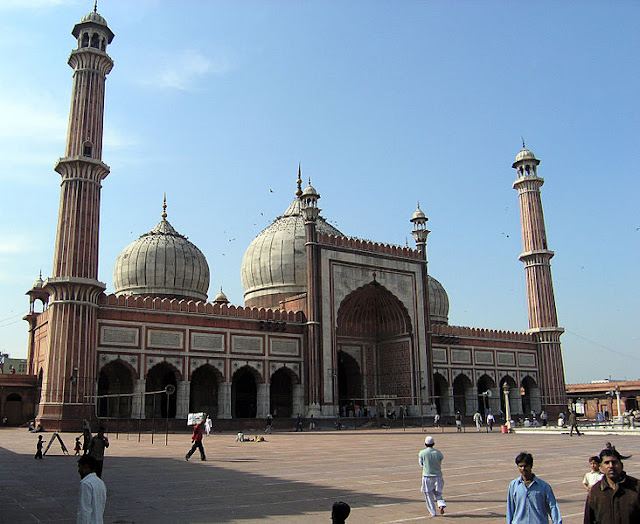Akshardham Temple is an extremely beautiful structure located along the River Yamuna in Delhi. It is the must-see attraction of the city. Covering an area of 100 acres, this temple is truly an architectural jewel. It reflects a perfect blend of several architectural styles of India, symbolizing unity in diversity. The grandness of this temple earned it a prized place in the Guinness Book of World Records as the Worlds Largest Comprehensive Hindu temple. More than 1 lakh people visit this temple in a week.
The temple is surrounded by gorgeous green gardens fitted with fountains. Every bit of this temple has its own beauty to boast of. It is said that it resembles the Akshardham temple at Gandhinagar in the state of Gujarat in terms of architecture.
The extravagantly carved walls of the temple deserve special mention. The exquisite carvings of dancers, flowers, musicians, animals and gods adorn the walls. The temple was built under the guidance of the Bochasanvasi Aksharpurushottam Swaminarayan Sanstha (BAPS) and inaugurated in 2005 by its leader Pramush Swamimaharaj, leader of the Swaminarayan sect. The whopping amount of Rs 2 million was spent on the construction of the temple.
The temple houses a 141 ft high statue of Swaminarayan surrounded by Gurus of the Swaminarayan sect. It is one of its main attractions. A musical fountain and an IMAX theatre add more charm to the temple. The other attractions are exquisitely carved pillars, 9 ornate domes, a magnificent Gajendra Pith (plinth of stone elephants), 20 quadrangle shikhars, over 20,000 statues and floral motifs. Italian marble and pink sandstone were used in the construction of the temple and no steel was used at all.
The temple was designed on the principles of the ancient Veda texts. The Yagnapurush Kund inside the temple complex is the India’s largest step well which is fitted with a musical fountain. It is a treat to the eyes to watch this Kund. Deserving special mention is the Mandovar, an external wall of the temple carved extravagantly. It is the only and largest wall with dimensions of 611 ft x 31 ft. You can also enjoy an evening boat ride on an artificial river on your Akshardham temple tour. Surely it will be pleasurable.


 |
| in night view |
 |
| in night |
Visit the majestic Akshardham Temple and you are bound to come back completely mesmerized. It is a religious center with sheer architectural beauty where tourists come from across the globe.






















